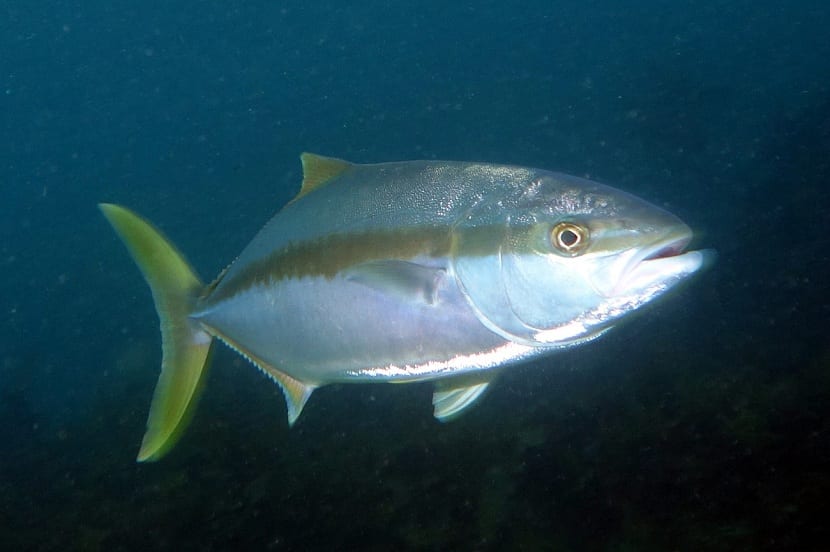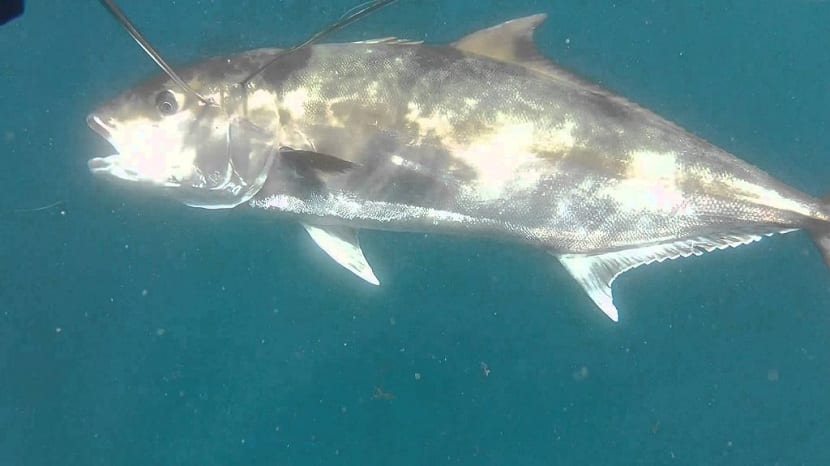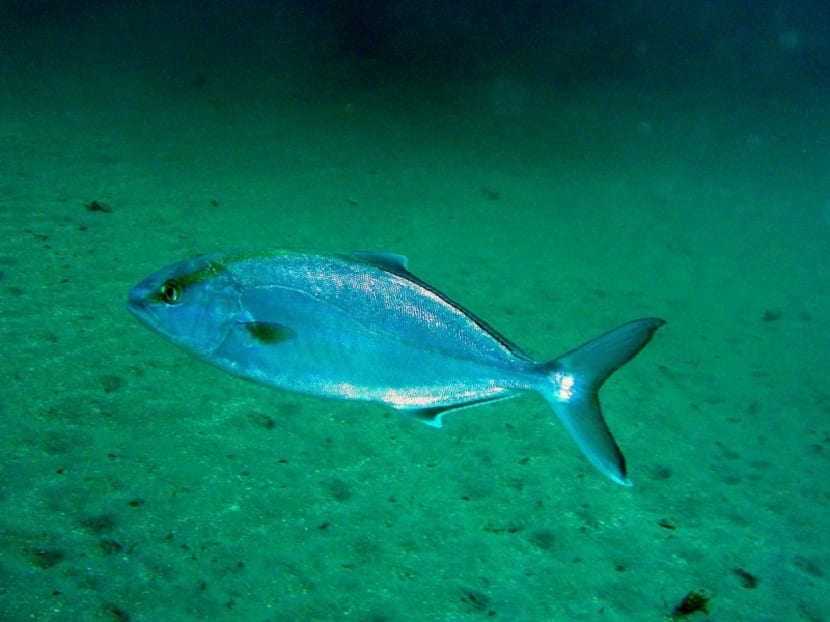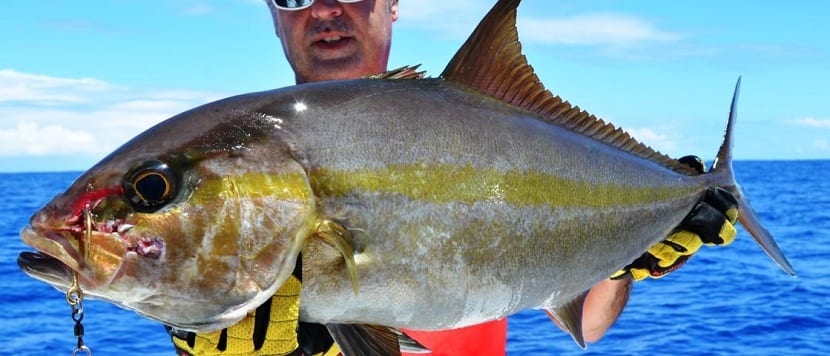
Lemon fish is well known around the world for its delicious taste. It is a fairly abundant fish throughout the year, but the time when it is found in greatest quantity is in the months of May to June. Its scientific name is Seriola dumerili and it belongs to the family of the caranidae. It is in high demand in gastronomy with different commercial and local names all over the world.
Do you want to know everything about this special fish?
Lemon fish characteristics

This species of fish is known in many parts of the world and in each area it is known by a name. For example, in Andalusia it is called amberjack, milk and lemon fish. On the other hand, in the Balearic Islands it is known as cirviola, cirvia, and sirvia and in the Canary Islands as megregal and lemon.
This animal usually lives in sandy places in deep rocky areas close to 300 meters. When winter comes, they settle on the seabed and only emerge to the surface when warmer temperatures arrive with spring.
It has eight dorsal spines and between twenty-nine and thirty-five white dorsal rays, three anal spines and twenty-two white anal spines. Its body is almost flattened and elongated. In addition, it has small scales that surround its body. The head is larger and more rounded, with small eyes, a wider mouth, and a longer, rounder snout with tiny teeth.
It has a contentive anal fin with two spines and two dorsal fins. Its tail is shaped similar to the rest of the fish. As for its color, it has a bluish dorsal part and the ventral part mixed between white and silver colors. Almost most of them have a horizontal yellow line that covers the flanks.
Their size can vary between a meter and a meter and a half, depending on their age. When it reaches maturity, it is capable of weighing up to 60 kilos. Its size and weight depends entirely on the area in which it lives, since temperatures and ocean currents are what determine its growth.
Behavior and habitat

Usually this fish has a calm demeanor, without aggressiveness with other species. Being a solitary species, it has pelagic habits. This fish is only seen forming groups or pairs in the breeding season. Once the lemon fish have reproduced in the spring time, they return to house in the depths of the ocean.
When the summer time arrives, it is possible to observe it near the surface on the coasts. When they reach adulthood, they form large groups near floating items such as jellyfish and salps.
Currently its area of distribution covers almost all the waters of the world's oceans. The area where its abundance is greatest is in the waters of the Atlantic Ocean, extending through the Mediterranean and the Bay of Biscay.
Its habitat is in the depths of the ocean in a range between 80 and 300 meters.
Feeding and reproduction

These fish are pure carnivores, since their diet is based entirely on other fish and invertebrates, in addition to squid and cuttlefish. This fish is usually caught while trying to hunt other species such as horse mackerel, crustaceans, fingerlings and bogas. When hunger appreciates, it is capable of eating any organism that roams the area.
Regarding reproduction, we find several aspects to take into account. The place where they reproduce depends on variables such as temperature and the climatic zone in which it is found. It usually occurs in the spring and summer time, when temperatures rise and they are more pleasant to take care of the fry.
Reproduction takes place when lemon fish become adults (usually within four years for males and five years for females). When this occurs, spawning is possible. At this point in their life they are usually a size of about 80 centimeters and weigh 12 kilos. These fish grow very quickly, reaching 40 centimeters in length in the first six months.
When the fish has reproduced for several years They are capable of reaching lengths of more than a meter and a half and can weigh more than 60 kilos. (Specimens weighing 80 kilograms have even been found).
The lemon fish chooses the place for reproduction in places with quite small schools and fixes its habitat near floating objects such as platforms, buoys or other objects close to the coast. When they go through the process of reproduction and spawning occurs, the eggs hatch and the fry hatch. When this happens, they spread out and seek solitude.
Both the eggs and the larvae are carried away by the ocean currents and it is they who decide to stay in the places they think are safest. This procedure usually takes about five months.
Fishing and nutritional values

Fishing for these fish is very common on the dates mentioned above. Thanks to the fact that they ascend to the coast, they are easier to be found and captured. Its fishing does not present problems and is usually successful thanks to the fact that the most suitable time for its capture and the places that it usually frequents are known. Although in the months of May and June they are more abundant, these fish are usually found throughout the year.
The difficulty of its fishing is due to the streamlined shape of your body. With this form he is able to perform his swims with tremendous strength and agility. With these skills they are able to stay on the seabed for a long time.
The lemon fish is a real trophy for amateur fishermen from the coasts and the high seas. The bigger it is, the more satisfaction it brings. In addition, it is highly valued for its nutritional contributions rich in proteins, carbohydrates, Omega 3, Cholesterol, minerals, iron, calcium, potassium, zinc, sodium, vitamins, A, E, B, B9, B12 and B3.
As you can see, the lemon fish is well known and demanded around the world for its rich flavor and its fishing success.